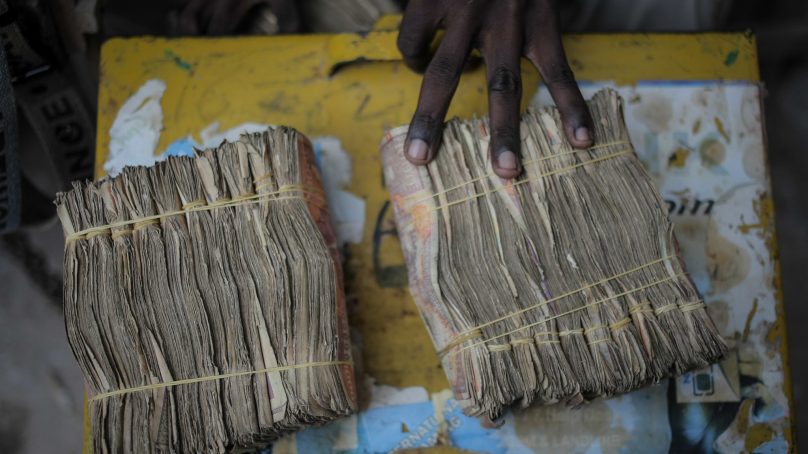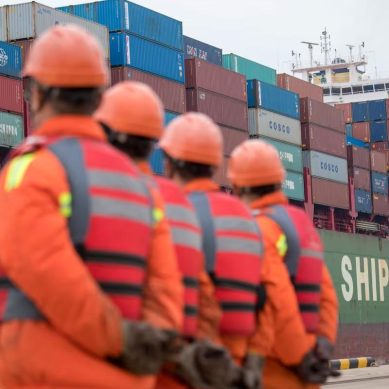
In areas where al Shabaab has not been able to penetrate the locality to establish a threat of violence, its extortion practices are less successful. Businessmen operating solely within Baidoa and Kismayo, for example, have reported rebuffing al Shabaab demands for payment without fear of retribution. This has coincided with periods in which AMISOM forces were stationed in these localities.
Without its levers of omnipresence and intimidation, al Shabaab’s criminal enterprise is dramatically weakened – underscoring the necessity of having an uncompromised, population-centric security presence to impede al Shabaab’s tools of coercion.
Al Shabaab’s resilience is due, in part, to a government fraught with patronage and clannism, which exposes it to infiltration and sabotage.
In its own self-assessment, the Somali government noted “Corrupt government officials tolerate illegal activities in return for payments. Business is based on patronage networks and tight monopolies dominate the market…. The governing elite are continuously involved in allegations of embezzlement of public funds from the already meagre Somali coffers, providing opportunities for rampant [money laundering].”
The prevalence of patronage in government and clan politics has contributed to the finding that despite years of international investment and training, “a significant portion of [Somali National Army] personnel deployed in the field have never received training and/or equipment from external partner programmes or as part of the [federal member states] formation process.”
Such a dysfunctional environment makes it possible for an entity like al Shabaab to thrive.
As al Shabaab’s extortion racket has grown, it has sought new ways to circulate and store its ill-gotten capital. One means of doing so has been through the formal banking and financial services that have been established in Somalia.
To mitigate this, the government of Somalia implemented an Anti-Money-Laundering and Countering the Financing of Terrorism Act in 2016. The act requires financial institutions to report transactions that exceed $10,000.
While this is an important first step, many money-transfer operators are afraid to report transfers that exceed $10,000 for fear of retaliation by al Shabaab. In 2019, only nine suspicious transactions and 113 large cash transactions were reported from private financial institutions operating in Somalia.
The majority of financial transactions made between al Shabaab agents, meanwhile, are still cash-based and through mobile money transfers. There are an estimated 155 million mobile money transactions in Somalia a month, worth about $2.7 billion. The UN has found that a lack of mobile money and “know your customer” regulations has resulted in anonymity of mobile account holders, a gap al Shabaab has repeatedly exploited.
In its effort to implement a more robust regulatory framework, the federal government developed mobile money regulations and, in February 2021, licensed its first mobile money service provider. Since then, two more providers have been licensed and the government expects their full compliance with regulations toward the end of 2023.
The UN Office on Drugs and Crime has provided the government of Somalia technical support on disrupting al Shabaab’s financing sources, methods of storage and transfer and illegal taxation systems. However, the federal government has been slow to curb al Shabaab’s exploitation of the financial system beyond targeting al Shabaab financial officers and “taxation” checkpoints via conventional military operations.
Experiences from other countries’ efforts to control money laundering may hold lessons for Somalia.
In Libya, a call-in radio programme in the city of Zuwara educated listeners on the harmful impact of organised crime and how law enforcement, civil society and religious leaders could join forces to counter it. The initiative raised awareness and generated a positive response from the public.
In some cases, the level of mafia power and political negligence are so overwhelming that a dissolution of the local authority is necessary. This is something that happened to the city council of Reggio Calabria in Italy in 2012, providing an opportunity for a reset toward impartiality and good governance of the local administration.
As recognised in Italy, asset confiscation has been a powerful instrument against the mafia. Turning seized assets (i.e, property, businesses) over to citizen-run collectives for economic development to benefit that community helps build public support against the criminal network.
In the western Balkans, social reuse of confiscated criminal assets has similarly opened the possibility of strengthening resilience to organised crime and building bridges between civil society and the authorities.
Al Shabaab has been effective at generating revenue by co-opting key government and financial entities in Somalia. The government continues to suffer from several self-identified vulnerabilities, not least the lack of proper identification, a lack of coordination among regulatory, law enforcement, and judicial authorities, and a lack of political will.
An essential next step in countering Al Shabaab’s revenue flows, therefore, is to further prioritise the professionalisation of the government’s infiltrated agencies, particularly the entities responsible for financial, intelligence and judicial functions, which are at the forefront of shutting down al Shabaab’s financing and money laundering.
This will require more than just financial sector development but also better criminal investigatory work, improved law enforcement and a change in culture within the federal government and federal members states toward transparency, accountability, and citizen service delivery.
Al Shabaab’s capacity for extortion leverages its reputation of omnipresence and intimidation. As the examples of Baidoa and Kismayo reveal, however, the presence of a capable and disciplined security force that is free from al Shabaab influence can undermine that perception and re-establish space for the government, the private sector and civil society (including religious leaders) to operate autonomously.
Restricting al Shabaab’s revenue flows, therefore, is simultaneously tied to strengthening Somalia’s population-centric counter insurgency efforts.
Experience from other parts of the world dealing with mafia-like influence shows that these patterns can be reversed. However, this will require sustained political will as well as incentives and protections to engender popular cooperation with the government against al Shabaab’s expansive revenue generation schemes.
- A Tell / African Centre for Strategic Studies report











